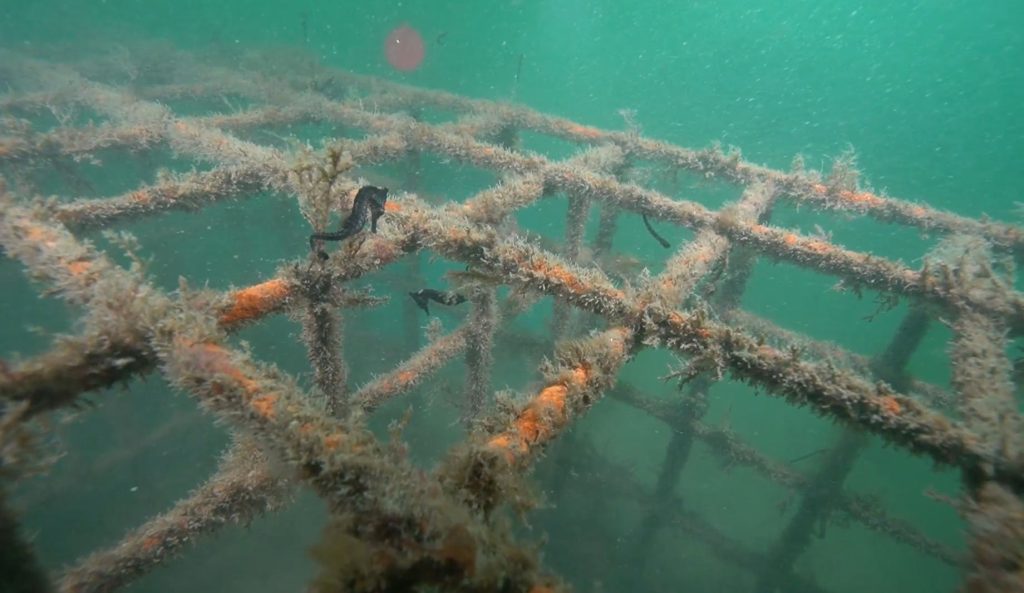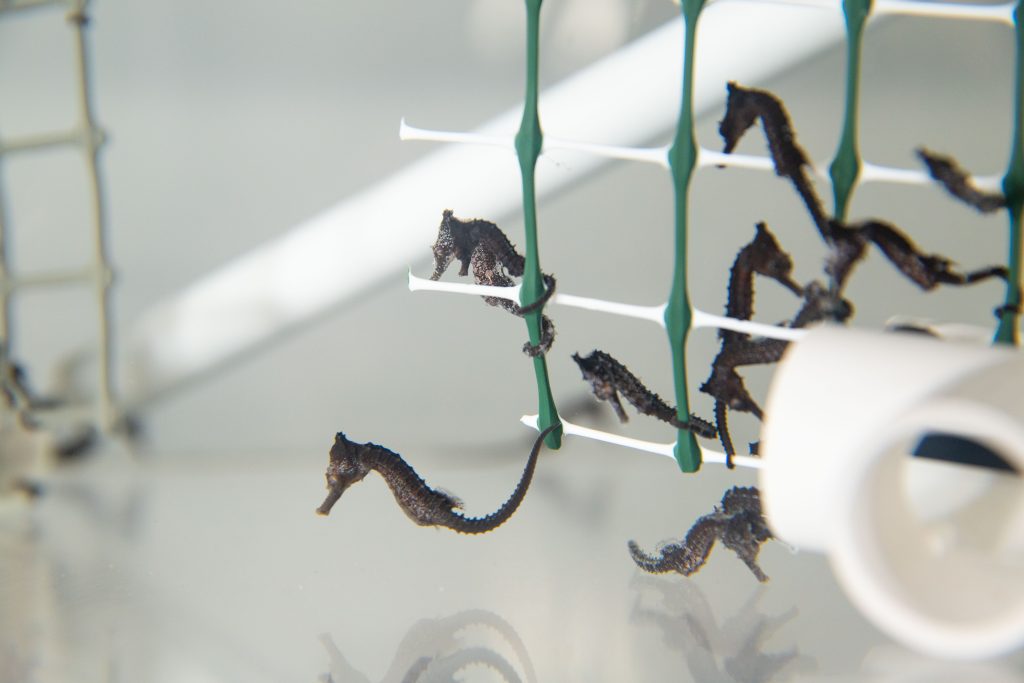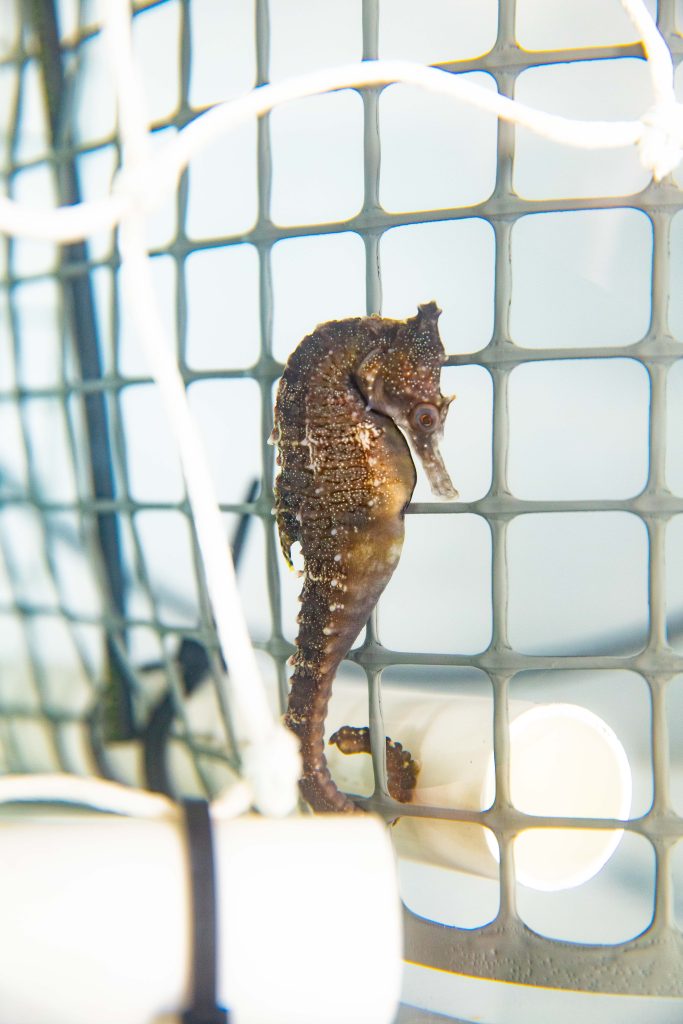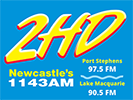
Three hundred endangered White’s Seahorses have been released into Port Stephens in the first ever ocean-release of the species locally.
Also known as the Sydney Seahorse, the endangered species was named after John White, Surgeon General to the First Fleet and is endemic to the east coast of Australia. The seahorses favour shallow-water estuarine habitats and are currently known to be found in eight estuaries on the NSW coast, but are most abundant in Port Stephens, Sydney Harbour and Port Hacking.
But, the seahorse’s habitat has been rapidly declining. Over 90 per cent of the soft coral and sponge habitats have declined in Port Stephens where the seahorse used to be abundant. The habitats have been destroyed through the installation of boat moorings, boat anchors and the inundation of habitat by sand movement.
The NSW Department of Primary Industries Fisheries has been working with SEA LIFE Sydney Aquarium for the past four years to save the endangered seahorse. Last year a record 1,000 seahorse fry (babies) were born at the aquarium.
Adult seahorses from Port Stephens were provided to the aquarium as brood-stock last year and started breeding immediately. They have now grown to a suitable size to be released into the same region their parents were from which is what happened yesterday.

Laura Simmons, SEA LIFE Regional Curator for Australia and New Zealand, said three hundred were released into Port Stephens yesterday.
“This is a huge step in our seahorse recovery program. We’re excited to take the successes we’ve demonstrated in Sydney Harbour up to Port Stephens where populations have seen the most devastating declines.
“This year’s success of our seahorse recovery project, was amplified by a grant from the Australian Government. This grant funding supported the expansion of our breeding and holding facilities, quadrupling the size of our spaces dedicated to seahorse care,” said Laura Simmons.
In February, 30 ‘seahorse hotels’ were deployed into Port Stephens for the juvenile seahorses, allowing enough time for growth of sponges, algae and seahorse prey, such as small shrimps, onto the structures, making them perfect locations for seahorses to curl their tails around and call home.
It’s expected that the seahorses will live on the hotels until October when they start breeding which will help lead the recovery of the endangered species in Port Stephens.
Going into year five, the partnership will continue to stretch this project across known ranges of the seahorses.


